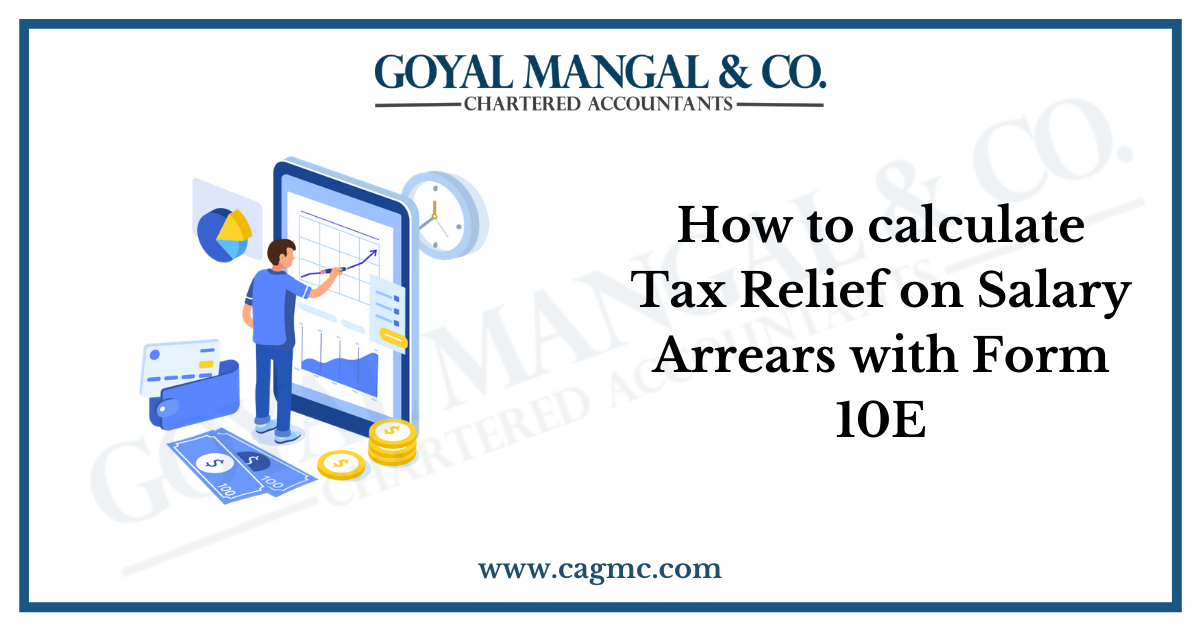| Content
Meaning of relief under section 89(1) Important points to remember of Relief under Section 89(1) |
What is arrear salary?
Arrear is a legal term for the part of any debt that is overdue for one or more required payments. Salary arrears mean if employer has not been paid the due salary payment of the employee. Arrears of Salary are taxable under income Tax Act. When an employee receives any arrears of salary for the previous years, which was not taxed, earlier on due basis, then the salary when received is taxed on receipt basis.

Meaning of relief under section 89(1)
If any person receives any portion of its salary in form of arrears or in advance, or have received the family pension in arrears, then they are allowed some tax relief under section 89(1).
It is mandatory to fill Form 10E online if you would like to claim relief as allowed under Section 89(1). While filing your income tax return, if you claim relief without filling the form, then the Income Tax Department will send you a circular regarding the same. The notice would state that you are not allowed to receive relief due to the missing Form 10E.
Important points to remember of Relief under Section 89(1)
- If any employee has accrued salary in any financial year and received it in a different year, then Section 89(1) allows that employee to adjust the salary amount and claim relief.
- Form 10E is mandatory in order to claim relief in this case.
- The purpose behind providing this relief is to ensure that a taxpayer does not fall in the higher tax bracket simply because he or she received his salary arrears in a different year.
- You need not pay tax on your income if it was earned in a different year.
- Arrears or advance salary amounts can add up to increase the tax amount for taxpayers and this could deter them from paying taxes. As a result, this could lead to a slump in the economy of the country.
How to claim credit under section 89(1)
If you want to claim relief under Section 89(1), for claiming relief Form 10E is mandatory to file. According to Section 89(1), tax relief is provided by recalculating tax for both the years; the year in which arrears are received and for the year in which the arrears is related.
Calculation for Claiming Relief on Salary Arrears
In order to claim relief under Section 89(1) concerning arrears of salary, an individual is required to fill up and submit Form 10E.
In a situation where you have received your pension or salary in arrears or advance, then Rule 21A guides you on how to calculate your tax relief. We can help you understand the calculation better with the help of the following steps:
Step 1
Calculate the tax on your total income for the current financial year (this will include the amount received through arrears or advance salary). Let’s call this Amount 1.
Step 2
Now, compute the tax payable on your income without adding the arrears or advance. This is Amount 2.
Step 3
Find out the difference between the two amounts (Amount 1 – Amount 2).
Step 4
Calculate the tax on your income for the year when the arrears arose (do not include the arrears). We can call this Amount 3.
Step 5
For the same year, calculate the tax payable by adding the arrears or advance amount to your income. This is Amount 4.
Step 6
Subtract the two Amounts (Amount 4 – Amount 3).
Step 7
Only if the amount in Step 3 is more than that in Step 6, a taxpayer can claim relief under Section 89(1).


